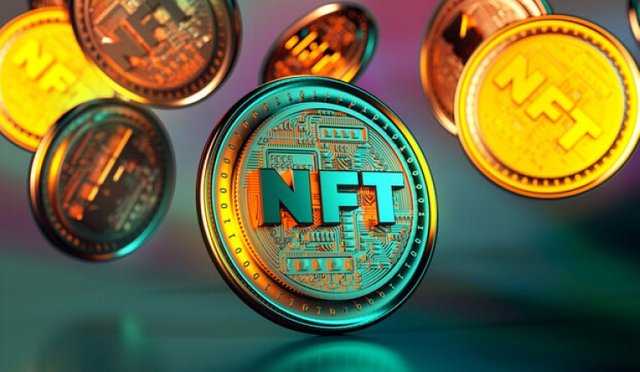
As we step into 2024, the Non-Fungible Token (NFT) market continues to evolve at a rapid pace, presenting both opportunities and challenges for developers and entrepreneurs looking to capitalize on this burgeoning industry. With increasing competition and shifting trends, crafting a winning strategy for NFT marketplace development is essential for success. In this comprehensive guide, we'll delve into the key components of a winning strategy, encompassing market analysis, technological advancements, user experience optimization, and community engagement.
Understanding the Current Landscape
Before formulating a strategy, it's crucial to gain a deep understanding of the current landscape of the NFT market. In 2024, the NFT ecosystem has matured significantly, with a plethora of marketplaces catering to various niches, including art, gaming, collectibles, and virtual real estate. Established platforms like OpenSea, Rarible, and Foundation continue to dominate the space, while new entrants strive to carve out their niche.
Market Analysis and Identifying Opportunities
Conducting thorough market analysis is the foundation of a successful strategy for NFT marketplace development. Identify emerging trends, market gaps, and untapped opportunities to differentiate your platform and capture market share. Explore niche segments with high growth potential, such as NFTs in the metaverse, virtual fashion, or digital identity.
Technological Advancements and Blockchain Integration
In 2024, technological advancements play a pivotal role in shaping the future of NFT marketplaces. Embrace cutting-edge blockchain solutions, scalability solutions, and interoperability protocols to enhance the performance, scalability, and flexibility of your platform. Consider integrating Layer 2 solutions like Optimistic Rollups or sidechains to mitigate network congestion and reduce transaction costs, ensuring a seamless user experience.
Furthermore, explore emerging blockchain platforms beyond Ethereum, such as Polkadot, Solana, or Avalanche, offering enhanced throughput, lower fees, and novel features for NFT development. Evaluate the trade-offs and compatibility with existing infrastructure before selecting the most suitable blockchain platform for your marketplace.
User Experience Optimization
User experience (UX) optimization is paramount for driving user adoption and retention in NFT marketplaces. Prioritize simplicity, intuitiveness, and accessibility in platform design and functionality. Streamline the onboarding process for creators and collectors, making it easy to mint, list, and trade NFTs.
Implement advanced search and discovery features, personalized recommendations, and social integration to enhance engagement and facilitate content discovery. Leverage data analytics and user feedback to continuously iterate and refine the user experience based on evolving user preferences and behaviors.
Community Engagement and Ecosystem Building
Community engagement is a cornerstone of success in the NFT space. Foster a vibrant and inclusive community around your marketplace, comprising creators, collectors, developers, and enthusiasts. Cultivate transparency, communication, and collaboration to build trust and loyalty among community members.
Launch community-driven initiatives such as creator grants, collaborative projects, and virtual events to empower creators and incentivize participation. Establish strategic partnerships with artists, brands, and organizations to enrich the content ecosystem and expand your platform's reach.
Furthermore, embrace decentralization and governance mechanisms to empower community members to participate in platform decision-making and shape the future direction of the marketplace.
Marketing and Branding Strategy
Effective marketing and branding are essential for generating awareness, driving user acquisition, and establishing a strong brand presence in the competitive NFT market. Develop a comprehensive marketing strategy encompassing content marketing, social media campaigns, influencer partnerships, and targeted advertising.
Differentiate your brand by highlighting unique selling points, such as exclusive partnerships, curated collections, or innovative features. Leverage storytelling and visual storytelling to convey the value proposition of your marketplace and resonate with your target audience.
Furthermore, prioritize community-driven marketing initiatives, leveraging user-generated content, testimonials, and word-of-mouth referrals to amplify your reach and credibility.
Regulatory Compliance and Risk Management
Navigating regulatory compliance and risk management is crucial for long-term sustainability and legitimacy in the NFT space. Stay abreast of evolving regulatory frameworks and legal requirements applicable to NFT marketplaces, including intellectual property rights, taxation, and consumer protection.
Implement robust KYC/AML procedures to mitigate risks of fraud, money laundering, and illicit activities on your platform. Collaborate with legal experts and compliance professionals to ensure adherence to industry best practices and regulatory standards.
Additionally, establish contingency plans and risk mitigation strategies to address potential security breaches, smart contract vulnerabilities, and external threats to your platform's integrity and reputation.
Conclusion
In conclusion, crafting a winning strategy for NFT marketplace development in 2024 requires a holistic approach encompassing market analysis, technological innovation, user experience optimization, community engagement, marketing, and regulatory compliance. By leveraging emerging trends, embracing technological advancements, fostering community collaboration, and adhering to best practices, developers and entrepreneurs can position their NFT marketplaces for success in a dynamic and competitive landscape. Stay agile, stay innovative, and seize the opportunities presented by the evolving NFT ecosystem to create impactful and sustainable platforms that empower creators, delight collectors, and drive the mainstream adoption of digital assets.